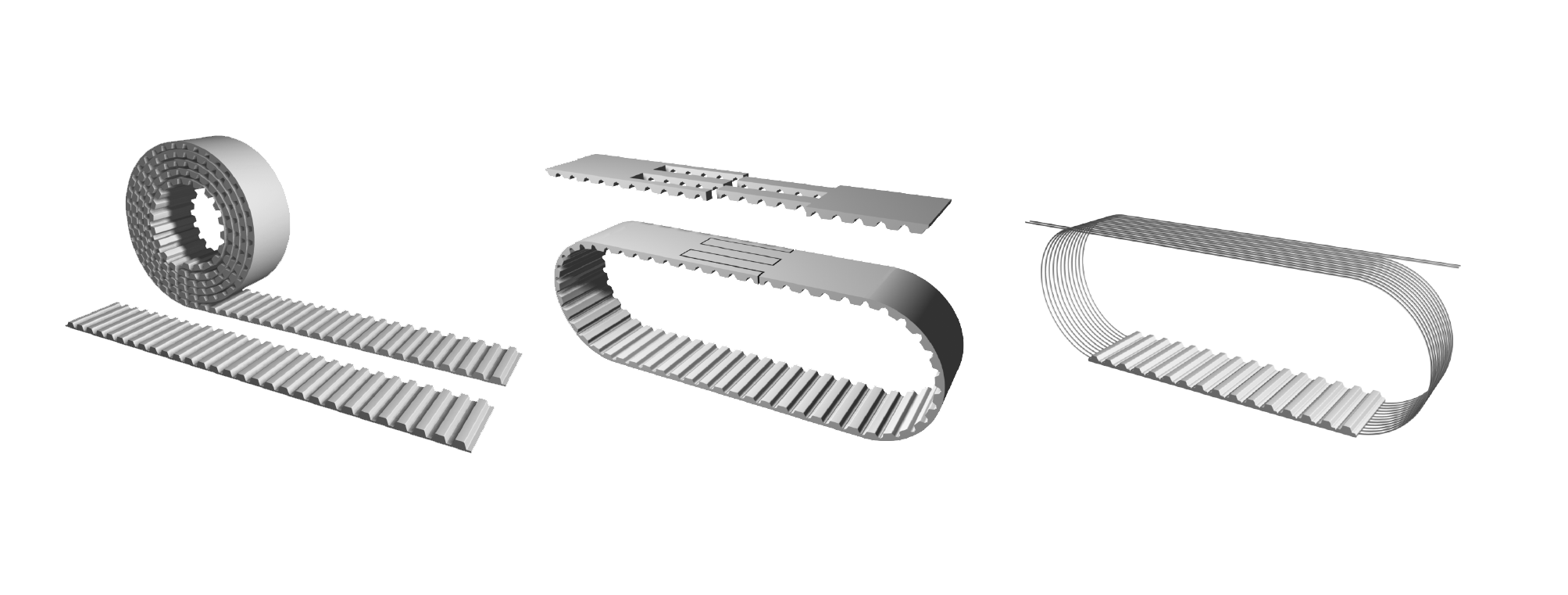
Choosing the right type of timing belt can make you feel a little bit like Goldilocks trying to find the perfect fit. With so many options available, and so many uses, it's important to understand which timing belt type is best for you.
Let's take a closer look at different timing belt construction types and how they're used so you can find the timing belt that meets all of your needs.

There are three main timing belt construction types, each one best for certain applications. The table below outlines the different types of timing belt constructions, their application, and example use cases.
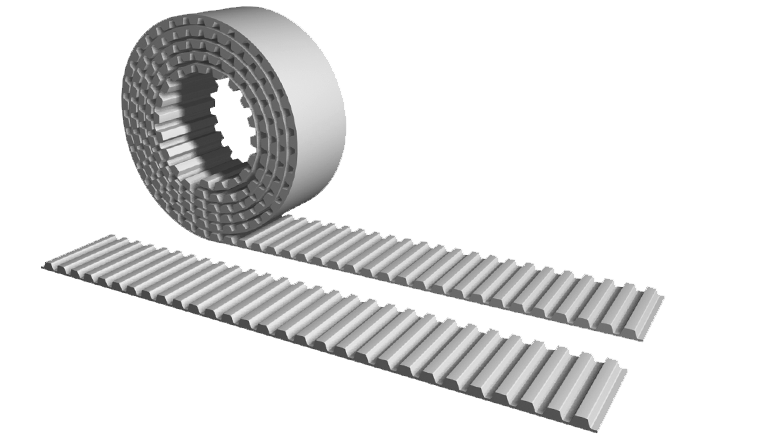
Application: Linear drive
Typical use cases: Linear actuators, 3D printers, CNC machines, miniature drives, material handling
An open-ended timing belt is a timing belt strip used with tensioning clamps in linear drive applications. Unlike other types of timing belts that move in a loop, open-ended belts move back and forth in a linear motion. They're an ideal choice for applications that require precise and controlled motion, like CNC machines or elevators.

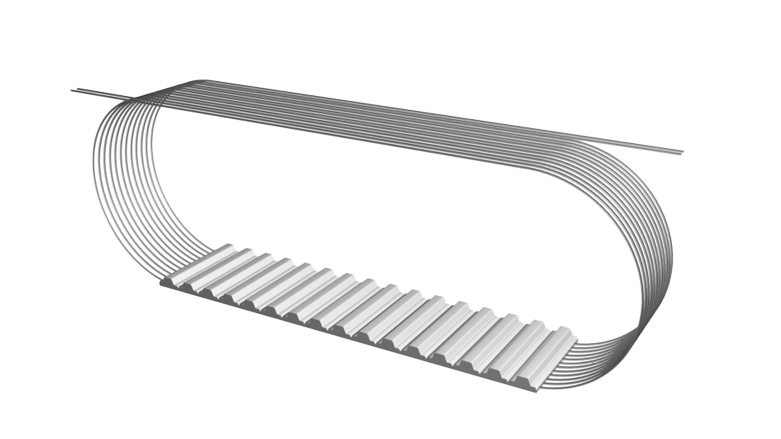
Application: Power transmission, high load conveying
Typical use cases: Synchronized conveying, robotics, high-speed machinery, engine timing systems
Truly endless timing belts are manufactured as a continuous loop, without seems or joints. With fewer weak points, truly endless belts are capable of handling higher torque and rotational speeds than other types of timing belts, which makes them ideal for power transmission applications.
The continuous manufacturing process and lack of joints makes the belt’s teeth and tension members uniform for consistent engagement and even load distribution. That means better position accuracy and timing consistency, higher strength, and reduced wear on both the belt and the pulleys.

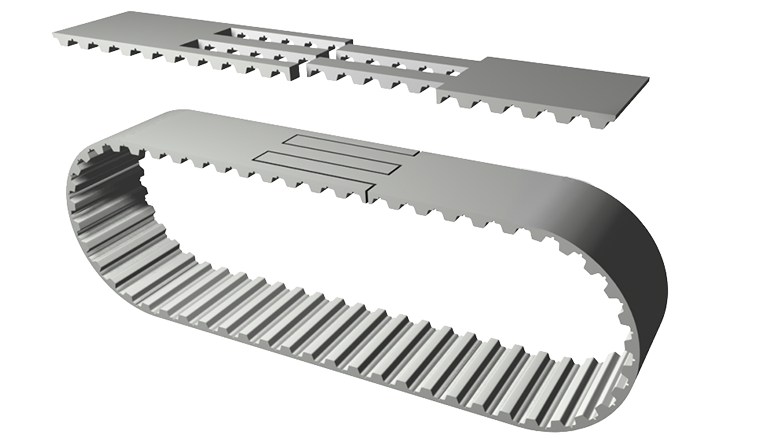
Application: Conveying
Typical use cases: Packaging, assembly lines, product transfer, sorting lines
Spliced and welded belts are also made into a loop, but the manufacturing process is different than it is for truly endless belts. Instead of being produced as a single, seamless loop, spliced and welded belts are cut to the desired length, with the ends finger-spliced and then welded together.
Because of the weak point at the finger splices, spliced and welded belts can't handle the same levels of torque or stress as truly endless belts, making them best suited for conveying applications.
Their design also makes them highly customizable, allowing you to choose any length you need in one-tooth increments and easily add profiles or cleats to transport your products.

Choosing the right type of timing belt construction is only half the battle. There are several other factors to consider when looking for the timing belt you need:
At BRECOflex CO., LLC., we specialize in polyurethane timing belts. Polyurethane provides highly precise performance, versatility, and durability. But timing belts can be made from a variety of materials, including:

A timing belt’s tooth profile describes the shape and design of the teeth on the belt, which directly affects performance and the compatible pulleys.
A timing belt’s pitch is the measure of the distance between the center of each tooth. Pitch is crucial when finding a timing belt, as it dictates what size pulleys the belts can be used with, its load capacity, and its precision. For example, timing belts with a large pitch can handle heavier loads but tend to be less precise than those with smaller pitches and require much larger pulleys.
Timing belt backings are an additional layer of material applied to the non-tooth side of the belt. These backings can boost performance, meet specific industry requirements, and potentially increase longevity.
Each timing belt backing material offers unique properties, like resistance to environmental conditions, high-temperature tolerances, increased friction, or reduced friction. There are even FDA compliant backings made of non-toxic materials to safely transport food.
Keep in mind that the backing you choose can impact the flexibility of your timing belt, which influences the minimum pulley diameter you need.
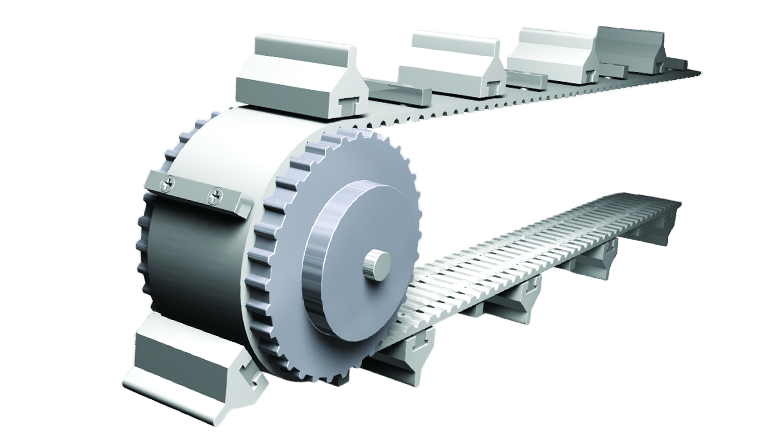
Some applications require profiles, also called cleats, to secure products for transport or positioning. Profiles are securely welded to the belt using thermal technology or mechanically attached at the spacing and orientation you need.
There are several types of profiles that can be attached to a belt, each one with a designated function. Some are designed to hold a product securely in place, while others help with transport. BRECOflex CO., LLC. offers nearly 3,000 profile mold options and can help with custom or modified profile designs.
There is a lot to consider when trying to find the type of timing belt you need. Luckily, BRECOflex CO., LLC. is here to help. We offer free engineering support and customer service to help guide you through the process.
Contact us today and get started on designing the timing belt that's just right for your application.